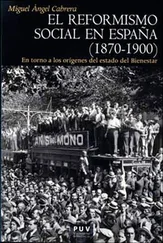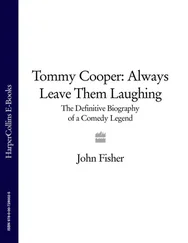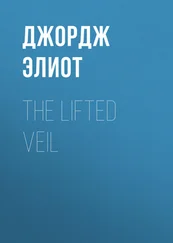Among the prizes that she holds, some were received for her short stories; others were for excerpts from her memoir. These include a Special Mention in Pushcart Prize XIII (1988) for “Wild Sage”; Distinguished Western Story Mention in Best of the West 6 for “At the Talent Show” and in Best of the West 3 for “Criminal Justice.” She also received first prize in the Utah Fine Arts Literary Competition for this same short story. “Mormon Levis,” another short story from her collection Parting the Veil: Stories from a Mormon Imagination , was awarded by the Sunstone Brookie and D.K. Brown Memorial Fiction Competition in 1997, but, four years before, “The Fiddler and the Wolf” and “Ida’s Sabbath” were awarded with a second prize in this same competition. She has been anthologized in Crosscurrents’ Best Fiction Anthology (1994) thanks to her prize winning short story “Criminal Justice,” and in some other anthologies with different short stories: A Great and Peculiar Beauty: a Utah Reader (1995), Walking the Twilight II: Women Writers of the Southwest (1996), In Our Lovely Deseret (1998), or The River Underground: An Anthology of Nevada Fiction (2001). Barber is listed in Cheryl Glotfelty’s literary anthology of the state of Nevada, Literary Nevada: Writings from the Silver State (2008). Other excerpts from her much awarded memoir can be found in various anthologies, including Fourth Genre (1999); Literary Las Vegas: The Best Writing about America’s Most Fabulous City (1995), and Frame Work: Culture, Storytelling and College Writing (1997). In fact, her first memoir has been widely praised as a whole. It was awarded with the Associated Writing Program Award Series Prize in Creative Non-fiction in 1991; the Association for Mormon Letters Award in autobiography two years later. In 2012, TheBrowser.com cited this autobiography as one of the top five books written about Las Vegas, and, in 2001, Las Vegas Mercury awarded the same recognition to this book. The novel And the Desert Shall Blossom was also honored in the Utah Fine Arts Literary Competition, and was chosen by the Utah Endowment for the Humanities for The Book Group Library Sciences. More recently, “Sweetgrass” was selected as “Notable Essay” in Best American Essays 2010 by upstreet five ; and “At the Cannery,” published in Dialogue: A Journal of Mormon Thought in 2009, was the winner of the Eugene England Memorial Essay Award, Best of Dialogue Award for Essay in that same year. 3
After considering all these personal details—dates and accomplishments—I still feel like asking a question that sounds like a sigh: are all these facts and dates the information I need to understand Barber’s literary production?
Everything I came to know by reading the covers of Barber’s books seems misleading to me—like a trap. That is why I wanted to enumerate all of them, before focusing on what I consider more relevant in regard to an author whose contribution to the history of literature relies on a daring commitment to the freedom of expression—“I want to speak what I speak, not what someone else tells me I should speak” (Barber, Mormon 109)—and faith in the healing power of creativity—“I want to be brave enough to stand naked in the snow, to live on if someone laughs, ridicules, or says I know nothing” (Barber, Mormon 110). It seems dangerous and counterproductive to reduce Barber’s significance to a few literary achievements when I am dealing with a body of work that is based on a personal trust in and a consistent commitment to the power of imagination and creativity—“creativity implies freshness, new life, new possibilities” (Barber, Rewriting 4).
In her article “The Mormon Woman as a Writer”—published in Dialogue: A Journal of Mormon Thought in 1990—Barber explains how she embraces the challenge of writing. She trusts writing, but she is also aware of the dangers, the risks and responsibilities that she has to consider when starting this journey. She wants to find answers to the many questions that she needs to ask. Writing becomes a way to raise questions rather than provide answers. Through literature she is able to break the sculpture, to unmask herself:
Subterraneously, like a blind reptile in a tunnel, I decided to dismantle the idealized sculpture, gather the disparate parts of myself together again, and find my voice—not an imitation or an echo. Against my better judgement, I began to write, a dangerous thing to do. Words were unreliable. People can pick words apart and throw them back with fingerprints on them. I felt nervous. Maybe I should dance, sing, play the piano, or write innocent children’s stories. Maybe I could speak most eloquently by not speaking at all. But the pen was in my hand. (Barber, Mormon 109)
In “On Rewriting and Practicing the Piano”—published in Weber Studies in 1989—Barber explains why she writes. She confesses the source of her compulsion to write. This appears as a fundamental clue to understand the nature of her style and the themes that she peruses:
Once while I was wandering through my life, I had a need to say something. I’m not sure where this something came from, but opinions and observations grew on the interior walls of my mind like lichen, growing into some kind of personal vision that wanted out.” (Barber, Rewriting 1)
In the next paragraph, she explains how, at first, she tried to relieve this need through music: “My first attempt at expressing this vision in something other than conversation was through music, namely the piano ” (Barber, Rewriting 1). A few lines later, she explains that the piano was insufficient in order to achieve her goals, so she had to find something else: “After trying music as a vehicle for expressing my vision, I decided I wanted a medium that would last longer than the vibration of a string. I wanted to use words that would stay on paper and not fade away like sound” (Barber, Rewriting 1).
Accordingly, it becomes clear that Barber attempts to express herself through her writing. An analysis of her work must go beyond the fact that it won—or did not win—awards and prizes. The fact that she has been widely acclaimed is certainly noteworthy, but the meaning of her many successful achievements has to be analyzed from a subjective perspective. By a subjective perspective, I mean that the importance of the recognition awarded her work must be evaluated from within Mormon context, with special regard to her identity as woman and mother. The search for relevance and recognition has a meaning beyond any selfish or factual connotation. All those awards and prizes should be interpreted as a means of empowerment and a source of self-esteem. They mean visibility. Barber herself admits that desire for publicity when she writes:
In my experience, the LDS woman is not encouraged to excel in one area alone. Balance is the more important quality. Excelling in one area is somehow antibalance.
Knowing how to do many things adequately seems to be the sanctioned criteria because, after all, a mother (the most praised role of the LDS woman) needs to be able to perform in all situations—nurse, comforter, baker, canner, secretary, cook, scriptorian, manager. Writing is a selfish act.
And if, by some monumental good fortune, I succeed at writing, I mustn’t be too visible. If my husband is not successful at his business, I can’t be successful at mine. (Barber, Mormon 116)
As I will try to show when analyzing her fiction, those awards that I found listed in the back covers of her books become really valuable and meaningful when the role of women in a Mormon context is considered. Although she was referring specifically to How I Got Cultured: A Nevada Memoir , Laura L. Bush appears to share this idea when she states that “Barber’s writing achievement exemplifies just such an unmasking of desire and rightfully earns her the public recognition that she always sought” ( Faithful 192).
Читать дальше












